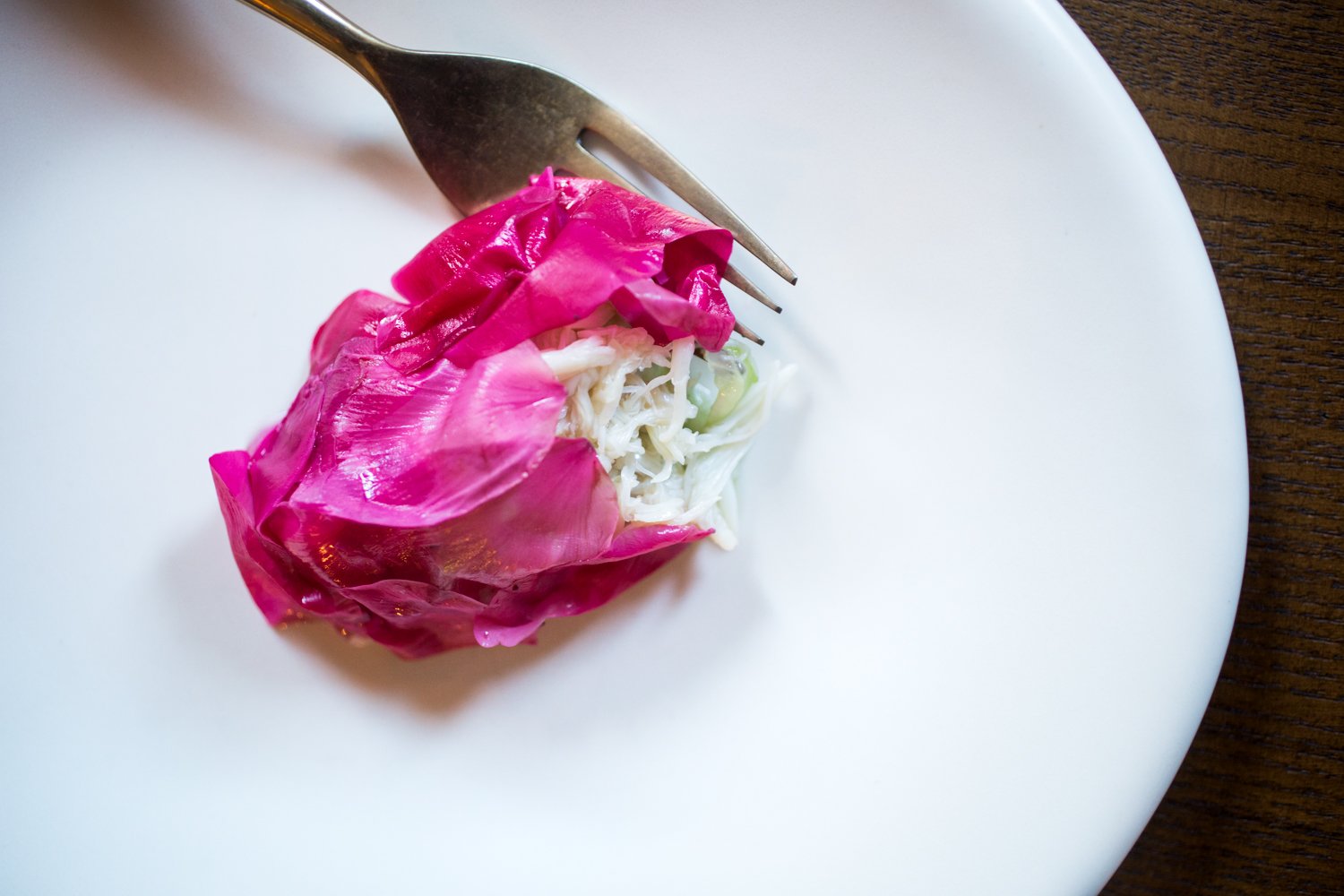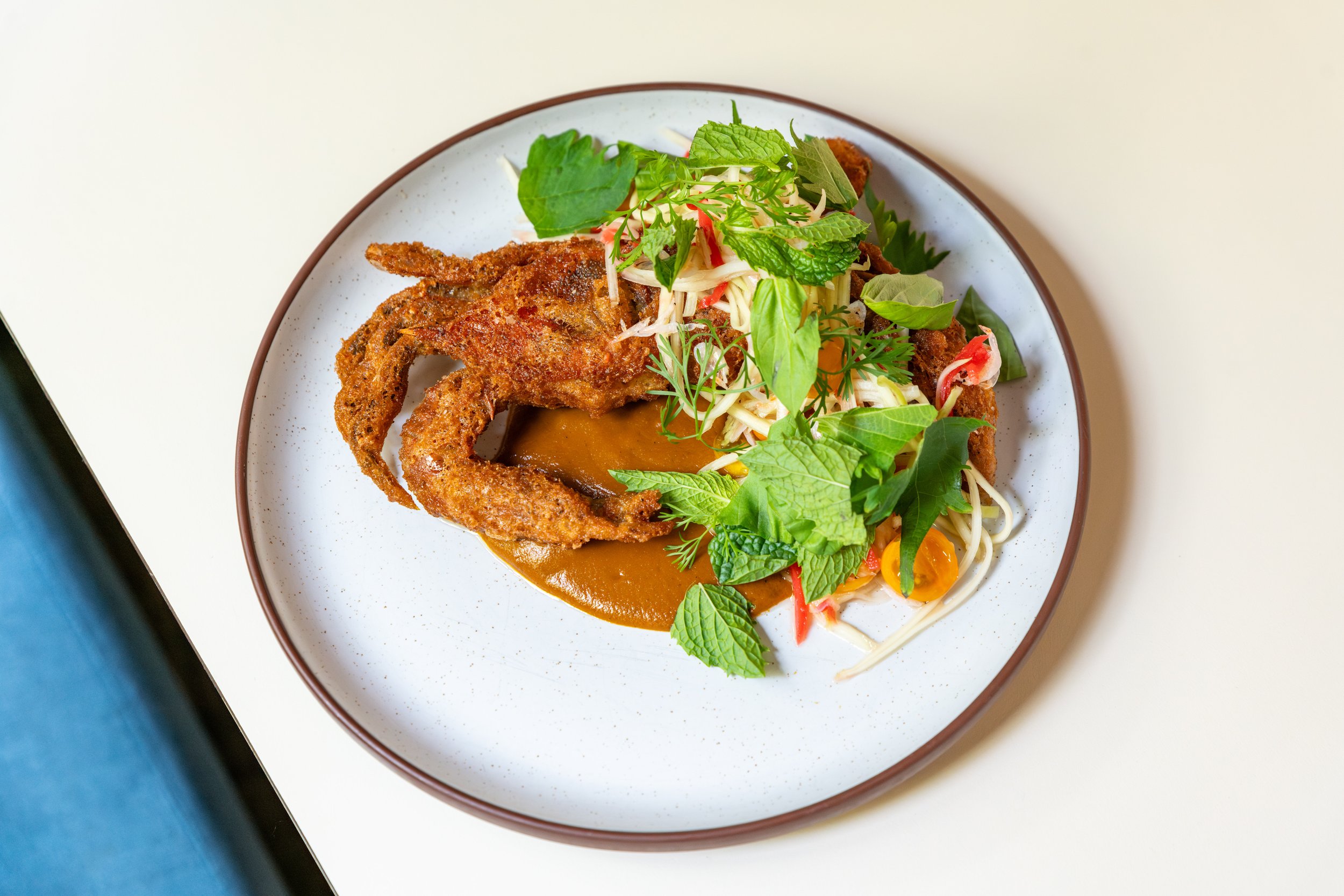New, Old, and Ancient Traditions in the City of Roses
Roses have infiltrated the culinary consciousness in a city with a rich, rose-filled history.
Portland loves a rose. It earned its reputation as the City of Roses in the early 20th Century when the World’s Fair converged on the town and its 200 miles of rose-bordered streets. Before that, when the Multnomah people and the Cascades Indians inhabited the area, there were wild roses: the bald-hip (rosa gymnocarpa), nootka (rosa nutkana), cluster swamp (rosa pisocarpa), and woods’ (rosa woodsii). Since 1924, Portland has been home to the International Rose Test Garden and its 10,000 rose bushes and 650 varieties.
The city’s menus also have a rose crush. At Le Moule, Bartender Anna Moss mixes the Dream Pop, combining London dry gin, Combier liqueur de rose, lemon, house orgeat, egg white, and cardamom bitters. The roses in the Combier may have been plucked from the Loire Valley, but the drink reads feminine, frothy, and tres Portland. At Langbaan, Rising Stars alum Maya Erickson’s “goth” coconut ash pudding has incredible texture from sticky rice flour, a silken mouthfeel from coconut milk and cream, and a deep black hue that she offsets with elements of rose—a rose cream and vibrant pink petals.
Chef Vince Nguyen of pop-up Jolie Laide grows rosa rugosa, a cultivar native to Eastern Asia, in his backyard. He plucked petals from 30 flowers to infuse in a vinegar that dressed about 300 plates of Dungeness crab and cucumbers, with the pickled rose petals concealing the crab. Nguyen prefers a hot pickling method, which helps mute roses’ soapy qualities. “People have a misunderstanding of real rose flavor. Most people use rosewater, which is overly concentrated. With fresh roses, only light floral notes and sweetness are extracted,” says Nguyen. He also finds that the rosa rugosa breaks down better than other varieties, and he’s planting more bushes for a bigger harvest next year.
Beyond the modern mise-en-place, roses are an ancient and universal medicine. “Roses are nutritive and protective, wherever you go in the world, there are important cultural traditions surrounding them,” says Elise Krohn, an educator at Garden-Raised Bounty (GRuB), a fellow in ethnobotany and ethnonutrition at Center for World Indigenous Studies, and author of Wild Rose and Western Red Cedar: The Gifts of the Northwest Plants.
According to Krohn, traditional cultures use roses as an astringent and to tighten inflammation from sore throats or upset stomachs. The hips, in particular, have loads of antioxidants, minerals, pectin, and vitamin C, and they’re used as a tea to boost immunity during cold and flu season. “I’m amazed at how many people know the folk traditions. I get emails from people in Russia!” says Krohn.
Among wild rose species in the Pacific Northwest, Krohn favors the nootka for its ample size and sweet-spicy flavor and aroma, and she recommends growing your own roses whenever possible (the nootka are also hardy!), or finding a place to sustainably harvest. When foraging, Krohn recommends taking only flowers that have fully bloomed (never buds) to help sustain bees and other pollinators. By plucking petals and leaving the hips for later, the hips will continue to develop as the season progresses. To respect tribal communities and animal populations, “harvest without visibly leaving an impact,” says Krohn. She also recommends Mountain Rose Herbs in Eugene, Oregon, for dried, deseeded rose hips.
Whether your affection for roses is culinary, medicinal, or aesthetic, Portland is the place to follow your petal-ed path.
PRO TIP
Rose hips are loaded with pectin. To make rose hip jam, you can either simmer deseeded hips with sugar and a touch of water, or combine powdered rose hips with room temperature liquid, stir, and hydrate for five minutes.









